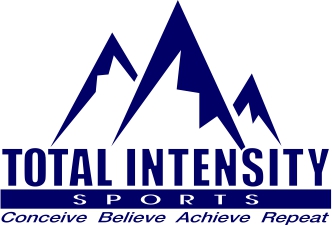
When you’re trying to get faster at the Olympic distance, one of the priorities is to ramp up your speed and “pain” threshold. Regardless of where you are now, whether your goal is to break three hours for the first time, to get under 2:30, or get those last couple of minutes you need to get on the podium, it’s all about stretching yourself and getting used to being uncomfortable. Greg LeMond’s famous quote, “It never gets easier; you just go faster.” is applicable here.
Over the years, I’ve leaned on several key workouts which have helped my athletes achieve success at the Olympic distance. Before I share some of those with you, I also want to emphasize the need for single-sport speed sessions – track sessions, bike intervals and time trials and swim sets in the pool. You can’t make significant gains on race day without these workouts. On top of that, a solid strength program, as well as flexibility (dynamic and static) plan, that gives you a base of strength and allows you to do the harder efforts without a risk of injury, is just as important.
Once you’ve developed several months of base of fitness, strength work, and several weeks of single-sport speed sessions, you’re ready to get into the meat of Olympic distance speed work. The common components of these workouts are important:
- Doing a proper warm-up, including dynamic stretching of at least 15 minutes before starting the speed sets.
- Timing yourself, but not being able to look at your time or paces in the middle of the workout. If you need to cover up the face of your Garmin with tape or something. Why? These workouts are all about effort, not about gauging how fast (or slow) you’re going. Sometimes when you see how fast you’re going can cause you to adjust your effort.
- Going as hard and as fast as you can. You have to leave everything you have in each and every session. Pacing yourself to “make it through” the workout will not ultimately get you to break through barriers. One of my favorite sayings is “It’s okay to hurt!”. Keep that in mind.
- Standard (and safe) routes to allow yourself to measure your improvement in black and white terms. Keeping the routes safe – free of a lot of traffic (including cars, bikes and pedestrians), stop signs, road hazards, etc. will allow you to go hard without risking a crash or other incident.
With all of that said, here are three examples of brick sessions to really test you and prepare you for race day:
- 10/3 x3: 10-mile bike followed by a 3-mile run. 3 Sets. 15-minute rest interval.
Description: Complete a 10-mile bike followed immediately by a 3-mile run. All-out effort. Time your splits on the bike, run and transition time. Remember, while you are timing yourself, you’re not looking at your time or pace while you’re in the midst of the workout. After you complete the first round, you have 15 minutes to recover, hydrate and refuel, reorganize your gear and get ready to go again. - 15/4 x2: 15-mile bike followed by a 4-mile run. 2 Sets. 15-minute rest interval.
Description: Complete a 15-mile bike followed immediately by a 4-mile run. All-out effort. Time your splits on the bike, run and transition time. Remember, while you are timing yourself, you’re not looking at your time or pace while you’re in the midst of the workout. After you complete the first round, you have 15 minutes to recover, hydrate and refuel, reorganize your gear and get ready to go again. Hydration and fueling while you are in the midst of this workout is important – not just in the rest interval. - 30/8: 30-mile bike followed by an 8-mile run. 1 Set.
Description: Complete a 30-mile bike followed immediately by an 8-mile run. All-out effort. Time your splits on the bike, run and transition time. Remember, while you are timing yourself, you’re not looking at your time or pace while you’re in the midst of the workout. Hydration and fueling while you are in the midst of this workout is critical.
Do these sessions multiple times throughout your season, using the same routes, and see what your results are – obviously try to improve each time. Benchmark sessions like this are a really great way to see your progress.
The first two workouts specifically tap into your ability to “hurt” and push yourself at paces you might not be used to holding when you’re racing. Since they are shorter, you can typically go a little faster, at least in the first sets. They also force you to push hard when you already have hard miles in your legs. This conditions yourself to push hard when you’re tired – critical to improving race day times.
The last workout builds your endurance beyond race day distances. If you train at distances longer than what you are racing at, when race day comes it will not seem nearly as hard. Mentally, you can always lean on the fact that you’re used to doing 8-mile runs at a high intensity in the midst of your 10K. In fact, all of these sessions have cumulative miles beyond what you will deal with on race day. All of which can help you psychologically on race day, because race day efforts are no longer only happening on race day. They are a normal component of your training.
I’m confident that if you incorporate these types of sessions into your Olympic distance training, keep in mind that “it’s okay to hurt!”, you’ll see some significant gains on race day!









